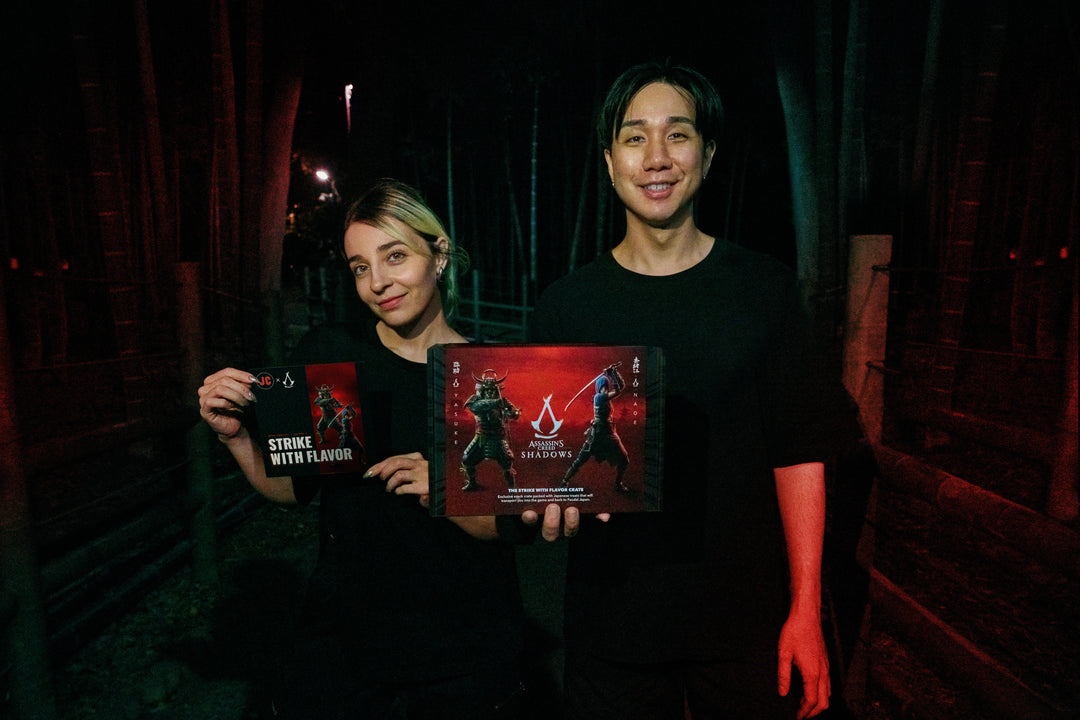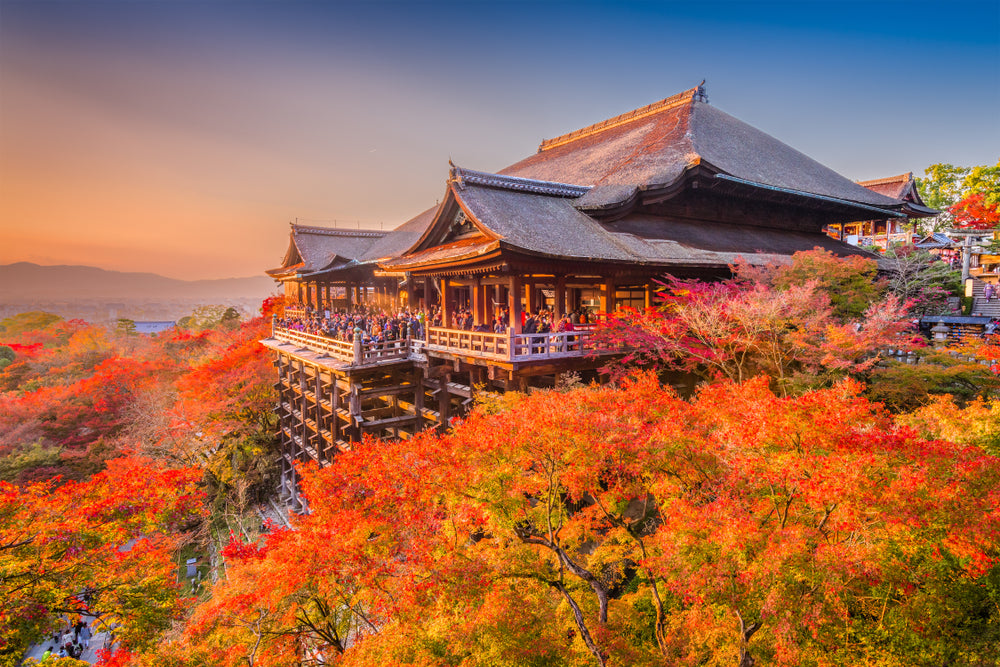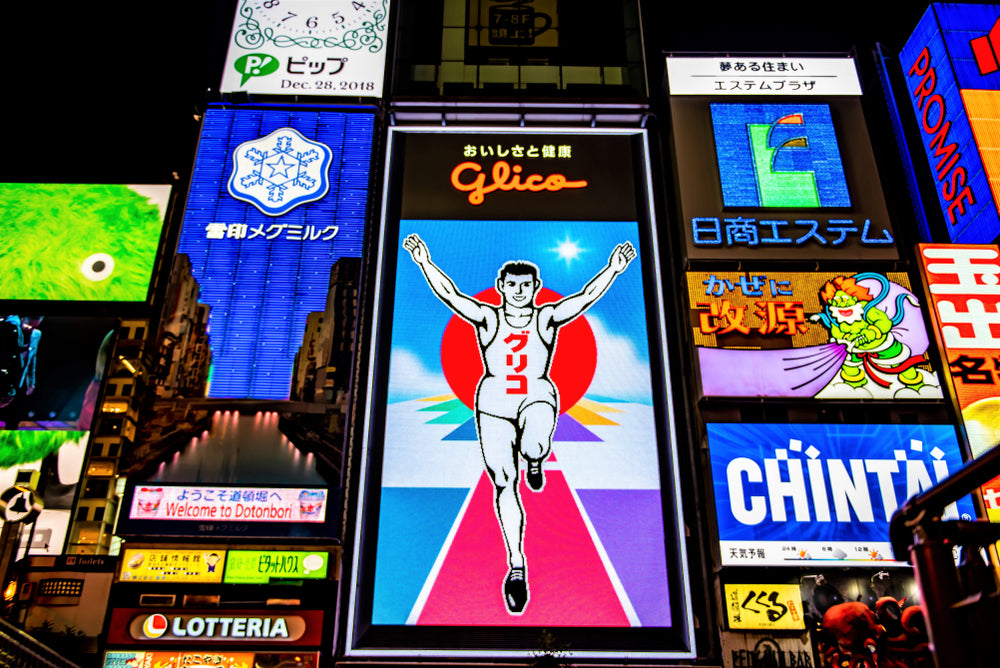Best Restaurant in Japan You'll Need to Visit
Japan has as many authentic Japanese cuisine traditions as there are tourist destinations there. While the most common foods consumed in Japan include rice, noodles, miso soup, fresh seafood, seaweed salad, cream cheese, and sushi bar, the nation has also established a penchant for other regional and seasonal foods. Japan offers selections in every price range for lunch, whether it be traditional or seasonal cuisine. It has a wide range of restaurants that not only serve the best Japanese food but also improve the overall dining experience. Read on and discover the best Japanese restaurants you'll definitely need to visit!
Top 5 Restaurants in Tokyo, Japan
Tokyo is home to some of the top restaurants in the world and has more Michelin stars than any other city on the planet. Any genuine cuisine enthusiast would know that visiting Japan's dynamic metropolis is essential. It's the ideal place to start a culinary experience with its variety of delicate, seasonal foods and excellent chefs who know just what to do with them. And while ramen and sushi might be the first foods that come to mind when you think about Tokyo, there is so much more to uncover for those willing to investigate. Here are 5 of the best Japanese cuisine restaurant in central Tokyo, Japan.
1. Kobe Beef Kaiseki 511

Kobe Beef Kaiseki 511 restaurant, situated close to Tokyo's Akasaka station, is well-known for its traditional wagyu beef dishes. The number 5 represents grade 5 Kobe beef, while the number 11 represents the highest level of marbling for the meat, making the term 511 itself a mark of quality. The restaurant's ambiance is opulent and unpretentious, with the choice of the main dining area and private/semi-private rooms. A seasonal course menu is available for 13,800, which specializes in Kobe beef cuisine and has a welcoming, bilingual staff. You'll be sure that the greatest of the best is what you'll get when you eat at Kobe Beef Kaiseki 511. Once you've tried the beef at their restaurant, it will be difficult for you to eat regular beef again because they only utilize the best, most marbled meat. The restaurant's chefs choose the beef at auctions for the eight or so courses of the meal, buying the entire cow to assure the best pieces of meat.
Together with meals, the restaurant offers a variety of wines at different price points and stocks hard-to-find shochu varieties that go well with the fare. For bigger groups looking for a more private dining experience, there are private rooms available in addition to the normal seats. The restaurant is ideal for a romantic dinner date because it is affordable and has great food. You might never be able to appreciate the meat again after dining at Kobe Beef Kaiseki 511 in Akasaka.
2. Takazawa

Takazawa is an upscale, 10-seater casual setting eatery in Akasaka that serves exquisite, expertly cooked Japanese-French food at a price to match. With this little business, Yoshiaki Takazawa and his wife Akiko run the eponymous restaurant that serves modern kaiseki. His cooking showcases his technical prowess and occasionally shows the French cuisine and molecular gastronomy influences. One of Takazawa's well-known dishes is the ratatouille dish, which features 15 different vegetables that are all cooked separately and arranged on a platter to resemble a single mosaic tile. Takazawa's culinary style combines intense seasonality with inventive presentations comparable to European gastronomy to showcase a new cornerstone of traditional Japanese cuisine.
Furthermore, despite years of training in a well-known Tokyo hotel, the head chef has avoided exposure by opening his restaurant in a quiet Akasaka backstreet. A mysterious door opens onto a small staircase that ascends to the cozy eating area. There is only enough room for three tables and ten seats, which are only used for one evening sitting. The chef never has a customer more than a few meters away from him while he prepares food behind his sleek metal show counter, and everyone receives the lovely Akiko's careful service. The chef will surely create a fantastic evening using only the finest ingredients and the best drinks sourced from across the world, even though there is no menu to pick from.
3. Sushi Sawada

Sushi Sawada is a place dedicated to sushi with only a six-seater space you'll definitely need to visit. Six guests are seated at Sawada around a counter where the Sawadas, a husband and wife duo, make some of the greatest sushi in Tokyo. All attention is on their superb craftsmanship and delectable meals in a courteous and quiet environment. Sawada is renowned for its aburi maguro, uni (blue-fin tuna), and hon maguro (seared tuna salad). Komesu (rice vinegar) and salt are used to season the rice, which makes it the ideal match for sake.
In fact, when Sushi Sawada was given two Michelin stars, this little Ginza establishment earned prestigious status, which it has maintained every year since. They make traditional sushi dishes to the best possible standard using traditional methods. They combine mildly fermented fish with rice vinegar to create flavor-packed dishes, and their maguro is renowned as some of the greatest in the world. The meals on the set menu are not specifically picked because they are made in accordance with the time of day. The cooks will take into account any allergy needs that are stated at the time of booking. Eventually, those who are successful in getting a reservation will be rewarded with sushi and sashimi that is so exceptional that it will probably always be your standard for other sushi encounters.
4. Narisawa

If you want to fully immerse yourself in authentic Japanese culture, then the Narisawa restaurant is what you are looking for, sure to arouse all your senses. Yoshiro Narisawa, the restaurant chef, produces something that is challenging to categorize, resulting in the formation of a new culinary category known as "Innovative Satoyama Cuisine." It's about appreciating the verdant Japanese countryside, healthy, organic food, and exquisite dining with alluring counter-like visibility. Every dish, drink, and exquisite tableware has a unique, carefully woven story to tell.
You can enter Narisawa's serene area by taking a few short steps from the busy street of Tokyo. During the day, you will experience specks of light filtering through the rich green foliage, and at night, Narisawa is transformed into a sophisticated setting where time moves slowly. Dark wood contrasts with white tones in a plain, uncluttered room that is devoid of all artifacts and artwork, as well as any background scents or music. You are completely free to concentrate on the food and interactions with other visitors.
5. Tapas Molecular Bar

The Tapas Molecular Bar, located on the 38th level of the Mandarin Oriental Hotel, provides an olfactory and gustatory introduction to molecular gastronomy. Your sight, nose, and taste sensibilities will be delighted for nearly two hours by the two artist-chefs' imaginative creations, which have earned them Michelin Guide stars. Each meal conveys a narrative, develops a concept, or retraces a transcendent flavor, trying to capture an ethereal taste or recreate a piece of nature-infused art.
The perfect fusion of varied textures, the alchemy of the elements, and the union of unique materials. Dishes are expertly complemented with premium beverages chosen by their restaurant's sommelier or painstakingly prepared by our bartender to enhance the experience.
Best Restaurants in Other City in Japan
1. Taian

Taian offers three Michelin stars Japanese Kaiseki without the formality in a cozy setting. Chef Takahata replaces outdated conventions with openness, fusing the finest of the conventional and the contemporary to produce a warm and lovely experience for all. Taian's food is essentially traditional at its core. Chef Takahata, however, adds his own components by incorporating fresh methods of thinking. The dishes' presentation puts an emphasis on the ingredients rather than ornate ornamentation.
Taian is located on a calm street in Nagahoribashi, Osaka. You should use all of your senses to appreciate the dinner at Taian. The restaurant's decor is beautifully understated and provides the ideal backdrop for the vibrant colors of exquisite cuisine. Behind the long counter is an open charcoal barbecue with burning charcoal rods. Even just the aroma of the roasting food is a lovely precursor to the upcoming feast.
2. Teru Sushi

A little sushi restaurant on the southwest Asian island of Kyushu has astounded visitors despite being quite remote. As a result of their glowing reviews, Teru Sushi is quickly rising to the top of the culinary world in Japan and luring foodies seeking the best of Kyushu. Chef Watanabe's upbeat voice welcomes you with a burst of energy as soon as you enter the building. Behind the stunning gingko counter that spans magnificently across the dimly lighted room, his judo-trained frame stands tall. Watanabe's forceful performance finds the ideal setting on a hefty cutting board in front of a striking wall painting.
As the sushi is ready to be served, Watanabe straightens his arm toward the customer rather than setting it on the counter. The sushi is resting on the tips of his middle two fingers. The visitor gently grasps the delicious-looking sushi and immediately pops it into their mouth. With just this action, Watanabe immediately establishes a personal connection with each of his visitors. Also, according to Chef Watanabe, the food should be as attractive to the eye as it is to the palate in order to encourage diners to dive in happily.
3. Zeniya

In a lovely section of central Kanazawa with cobblestone pathways and antique samurai homes, the Zeniya restaurant's delicate bamboo ladle and the quiet trickling of a water well invite you to delight your taste buds and heart. The little restaurant has maintained the same atmosphere of nostalgia since the chef's father, the original proprietor, opened it in 1970. Your thoughts will surely race as you pass through the charming, beaten path of former samurai village on your way to Zeniya to sample the highly customized Japanese cuisine prepared by second-generation Chef Takagi.
The traditional Kanazawa dish Kaga Ryori influenced the Japanese cuisine offered at Zeniya. However, a menu is not present. In fact, every day, the chef goes to the markets and chooses the seasonal foods that most appeal to him for his menu. Courses are put together through discussions with staff and an understanding of visitors' likes, experiences, and even their sentiments on the day to customize and develop the optimal menu for each individual and each circumstance. Dinner is organized like a typical kaiseki course meal with about ten dishes. Seasonal accents and flavours are present throughout. The basic idea is that food should nurture both the body and the soul, and Zeniya is adamant that the momentary enjoyment of eating has a huge positive impact on our well-being.
4. Hyotei

Hyotei has been loved by many for 450 years and is stunningly beautiful in its exquisite simplicity. It transports you to another place and time. In well-constructed settings, there is no extravagance or waste, simply everlasting, understated beauty. Paper sliding doors open to reveal tatami mat rooms with thick couches and unique low tables where the meal is served in a bewildering array of amazing courses. The experience is completely yours, thanks to the design, architecture, and service.
It is hardly an exaggeration to state that Hyotei is among the best restaurants in Kyoto since it prioritizes original flavors, simplicity, and elegance above all else. Wafting scents are used in Kyoto cuisine to pique appetites, and the season is highlighted through the use of important ingredients and sauces. Hyotei surely delivers haute cuisine appropriate to the times, blending modern advancements with the knowledge and customs of many previous generations. The delightful foods are served on ceramics made by the Eiraku pottery company, in lacquerware with a cosy gloss, or in other tableware items with an unimaginable or unfathomable worth. But Chef Takahashi reminds us that what makes this experience special from others you may have had in the past is not only the meal or the tableware; rather, the joy of the experience is in the customer connections.
5. Miyoshi

Chef Ito of Miyoshi is the ideal craftsman if beef cuisine is considered a craft. Even for gastronomes and beef experts, the tastes that explode from the cuisine at his own restaurant, Miyoshi will generate gastronomic memories that last a lifetime. Moreover, the Miyoshi restaurant is housed in a traditional Japanese building with a washi paper lantern, green potted plants, and pastel-slatted wood sliding doors accentuating the black wooden façade and creamy stucco walls. Also, as you sit at one of the six counter seats or tables for a total of twelve guests, comfortable leather chairs will envelop you in the warm, pleasant ambience of rich reds, glossy blacks, and dazzling gold.
Behind the spotless wood counter, Ito sharpens his knives in preparation for slicing, pressing, dipping, and shaping unrivalled delectable meat dishes. The seasonal details infused throughout the dining experience are so in line with traditional Japanese cuisine. Chef Ito has gained that prestigious classification because of his refined sense, sophisticated viewpoint, and the unwavering pursuit of the freshest beef. The lavish course features meat in some form in every dish and, at times, quite simple, but it can also be incredibly rich and intricate to highlight the best flavors and consider the attraction of each beef.
Visit the Best Japanese Restaurants Now!
These are just a few of the best Japanese restaurants you should visit to experience the richness, authenticity, and mouthwatering aspect of Japanese cuisine integrated with each amazing chef's knowledge and skills. They are sure to let you express how yummy Japan food culture is. Make sure to visit one of these restaurants, and you'll be treated like no other, from the heartwarming welcome of the chef and staff to the incredible aroma of Japanese cuisine. Enjoy!
Author Bio







Leave a comment